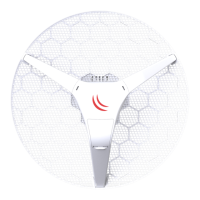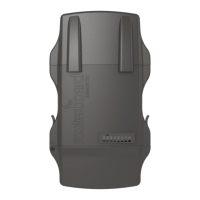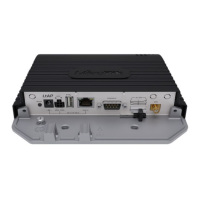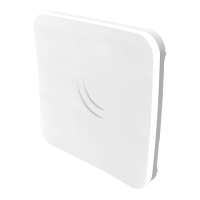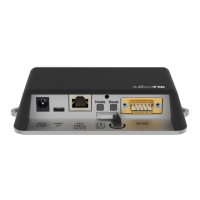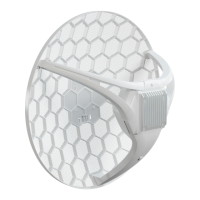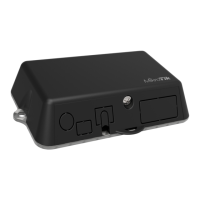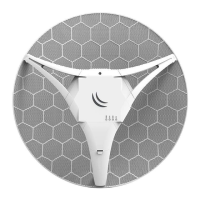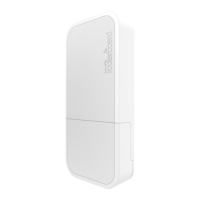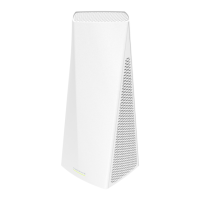FCC Caution: Any changes or modifications not expressly approved by the party responsible for compliance could void the user's authority to operate this
equipment.
This device complies with Part 15 of the FCC Rules. Operation is subject to the following two conditions: (1) This device may not cause harmful
interference, and (2) this device must accept any interference received, including interference that may cause undesired operation.
This device and its antenna must not be co-located or operation in conjunction with any other antenna or transmitter.
IMPORTANT: Exposure to Radio Frequency Radiation.
20 cm minimum distance has to be maintained between the antenna and the occupational user and 28 cm to the general public. Under such configuration,
the FCC radiation exposure limits set forth for a population/uncontrolled environment can be satisfied.
It is the installer's responsibility to ensure that when using the authorized antennas in the United States (or where FCC Antenna Installation. WARNING:
rules apply); only those antennas certified with the product are used. The use of any antenna other than those certified with the product is expressly
forbidden in accordance with FCC rules CFR47 part 15.204. The installer should configure the output power level of antennas, according to country
regulations and per antenna type. Professional installation is required for equipment with connectors to ensure compliance with health and safety issues.
Approved antennas:
Mikrotik Dual Polarity, Directional (9.0 dBi and 16.0), Short Backfire, Directional (21 dBi) and Parabolic Dish (24.5 dBi and 27.0 dBi)
OEM statement.
This module is intended for OEM installations only. As such the OEM integrator is responsible for ensuring that the end-user has no manual instructions to
remove install or modify the module. This module is limited to installations in mobile or fixed applications. OEM integrators may utilize antennas of like an
equal or lesser gain as appearing in the list in this document (reference 47 CFR, paragraph 15.204(c)(4) for further information on this topic. The MikroTik
OEM RF Module complies with Part 15 of the FCC rules and regulations.
OEM Modules have been certified by the FCC for use with other products without any further certification (as per FCC section 2.1091). Separate approval
is required for other operating configurations including portable configurations concerning to 47CFR paragraphs 2.1093 and different antenna
configurations. The OEM is required to comply with all 47CFR labeling instructions and requirements for the finished products.
Changes or modifications not expressly approved by MikroTik could void the OEM authority to install or operate the equipment. OEMs must test their final
product to comply with unintentional radiators (FCC section 15.107 and 15.109) before declaring compliance with their final product to Part 15 of the FCC
Rules.
: the OEM must ensure that the FCC labeling requirements are met. This includes a visible labels on the outside of the OEM enclosure WARNING
specifying the appropriate MikroTik OEM RF Module FCC identifier for this product as well as any other required FCC notices as presented below.
LDF 5 - FCC ID: TV7LHG5NDM
LDF 5 ac - FCC ID: TV7LHG5ACD
This enclosed device complies with 47CFR paragraph 15 C of the FCC rules and regulations. Operation is subject to the following two conditions: (1) this
device may not cause harmful interference, and (2) this device must accept any interference received, including interference that may cause undesired
operation.
Labeling and text information should be of a size of type large enough to be readily legible, consistent with the dimensions of the equipment and the label.
Industry Canada
CAN ICES-3 (A)/NMB-3(A)
This device complies with Industry Canada's licence-exempt RSS standard(s). Operation is subject to the following two conditions: (1) this device may not
cause interference, and (2) this device must accept any interference, including interference that may cause undesired operation of the device.
Le présent appareil est conforme aux CNR d'Industrie Canada applicables aux appareils radio exempts de licence. L'exploitation est autorisée aux deux
conditions suivantes : (1) l'appareil ne doit pas produire de brouillage, et (2) l'utilisateur de l'appareil doit accepter tout brouillage radioélectrique subi,
même si le brouillage est susceptible d'en compromettre le fonctionnement.
LDF 5 - IC: 7442A-LHG5NDM
LDF 5 ac - IC: 7442A-LHG5ACD
LE-LAN device restriction:
The device for operation in the band 5150–5250 MHz is only for indoor use to reduce the potential for harmful interference to co-channel mobile satellite
systems.
Users should also be advised that high-power radars are allocated as primary users (i.e. priority users) of the bands 5250-5350 MHz and 5650-5850 MHz
and that these radars could cause interference and/or damage to LE-LAN devices.
Les dispositifs fonctionnant dans la bande de 5 150 a 5 250 MHz sont reserves uniquement pour une utilisation a l'interieur afin de reduire les risques de
brouillage prejudiciable aux systemes de satellites mobiles utilisant les memes canaux.
Les utilisateurs devraient aussi etre avises, d'une part, que les utilisateurs de radars de haute puissance sont designes utilisateurs principaux (c.-a-d.,
qu'ils ont la priorite) des bandes de 5 250 a 5 350 MHz et de 5 650 a 5 850 MHz et, d'autre part, que ces radars pourraient causer du brouillage et/ou des
dommages aux dispositifs de RL-EL.

